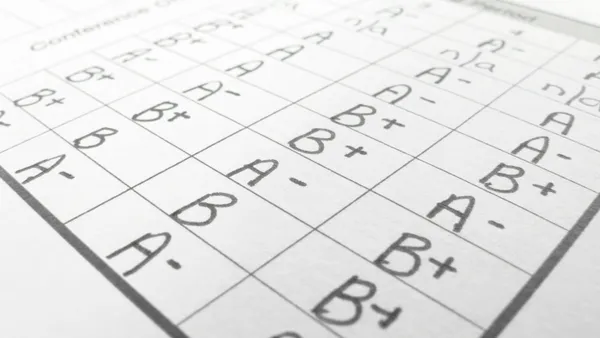Dive Brief:
-
The 2024 Nation’s Report Card will debut a new measure of student socioeconomic status upon its release in early 2025, according to a November announcement by the National Assessment Governing Board.
-
Instead of solely relying on students’ eligibility for free or reduced-price lunch to gauge low socioeconomic status, the National Assessment of Educational Progress will also include new measurements — specifically, the number of books in a student’s home and the highest level of education of either parent.
-
While data on free or reduced-price lunch eligibility will still be reported on The Nation’s Report Card, in addition to any related decades-worth of trends of this data, it will be newly labeled as “economically disadvantaged,” according to NAGB.
Dive Insight:
The move comes as there’s been increasing concern over whether free or reduced-price lunch eligibility is an “incomplete” and “insufficient” measure for socioeconomic status, NAGB said.
To address this, the National Center for Education Statistics "developed a composite measure, using data NAEP already collects, rather than relying on eligibility for the lunch program alone,” the governing board said in a statement.
Congress has mandated that NAEP report on differences in achievement among groups of students, including by socioeconomic status. Since 2003, NAEP has relied on free or reduced-price lunch eligibility to measure this status.
It’s still unclear how the new socioeconomic status index will appear on The Nation’s Report Card. NCES, however, said it plans to share that information in the weeks before the next assessment results are released in early 2025.
In recent years, momentum has grown to provide more free meals to students nationwide, both through the federal expansion of the Community Eligibility Provision and under scattered statewide universal school meal policies.
Because of this trend, however, it can be difficult for some schools and districts to track free and reduced-price eligibility among students. That's because under universal school meals programs, they no longer need to collect applications for families to qualify.
Though there’s yet to be an ideal measurement of socioeconomic status for school use, researchers have said, alternative models such as direct certification, state income tax systems, or the U.S. Census could be used to gauge family income.
In NAEP’s new model, it will rely on data NCES already collects in a questionnaire asking students in grades 4, 8 and 12 this question: "About how many books are there in your home?"
Students’ response options are:
- Few (0–10)
- Enough to fill one shelf (11–25)
- Enough to fill one bookcase (26–100)
- Enough to fill several bookcases (more than 100)
In its November announcement, NAGB pointed to a September 2023 analysis by the American Institutes for Research of what was then a proposed new socioeconomic status measurement from NAEP. According to NAEP, the nonprofit research group found the proposed index “better explains the variation in individual students’ test scores and achievement gaps between groups of students than the free- or reduced-price eligibility measure alone.”
Recent research also points to a need for continued measurements that track socioeconomic status when reporting on student achievement.
For instance, a study released in August by nonprofit think tank Thomas B. Fordham Institute found that social and economic factors can partially explain reading, math and science achievement gaps among racial and ethnic groups of elementary school students. However, one of the study’s authors noted that children’s socioeconomic status doesn’t completely explain the racial disparities in achievement.








 Dive Awards
Dive Awards





